Every little acorn carries the potential to become a mighty oak of great longevity.
Oaks (Quercus) are a stately deciduous tree species that are native to many of the northern hemisphere’s temperate regions.
Oaks enhance both urban and rural environments, offering welcome shade, shelter and habitats for a variety of animals and insects.
Their distinctive lobate margins of its leaves and the abundant acorns, or oaknuts, of oak trees make them instantly recognisable.
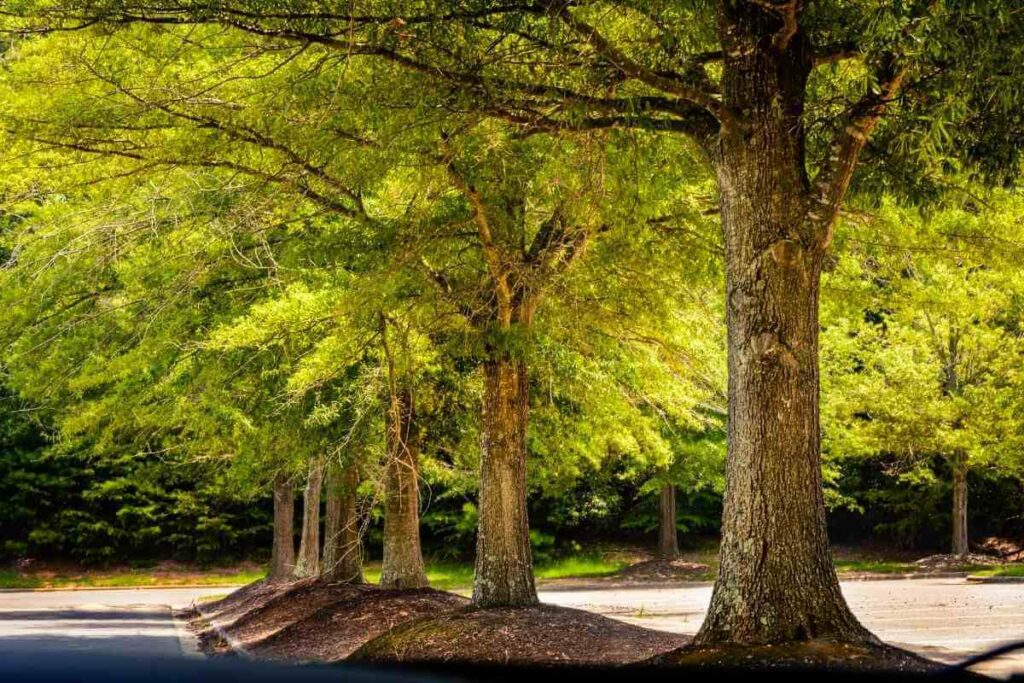
If you are landscaping or considering planting an oak tree in your garden, an understanding of the growth rate of oaks is essential.
This article is an oak tree growth rate guide, with chart, explaining the essentials of tracking the growth of this magnificent tree species.
All About Oaks
Many people think that there is only one type of oak tree, but actually the oak or Quercus family has over 500 subspecies, divided into Old World (Europe, Asia and North Africa) and New World (The Americas) that range from shrubs to mature trees.
Leaves that are spirally arranged on the branch with lobate or serrated edges characterise the oaks.
They are deciduous, but may keep dead leaves through the winter until spring, a feature known as marescence.
They can do this as their leaves are rich in tannic acid, which acts as an antifungal and deters insects.
Oaks are self-fertilizing, with male catkins produced in the spring that pollinate small, white female flowers. Their fruit, the acorn is also an iconic feature of autumn.
The tough leathery skinned oaknut sits within a cupule that is attached to the tree by a stalk.
Oaks Are an Ecosystem In a Single Tree
Oaks are massive contributors to the environment around them and support a wide range of woodland plants and inhabitants.
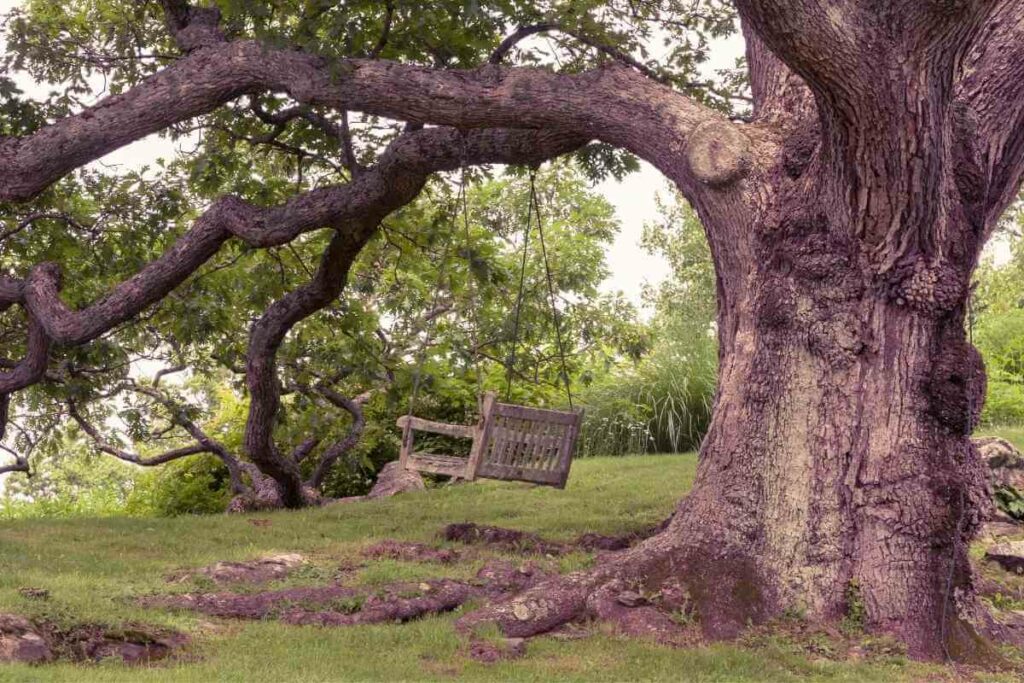
Every part of the oak tree contributes to the biosphere:
- Oaks absorb and utilise CO2 and release oxygen. Despite releasing CO2 as they respire, they are a net carbon sink.
- The canopy of an oak tree provides much needed shelter and shade for other plants, with the covering preventing excessive moisture loss from the soil.
- They provide a habitat and food source for birds, squirrels and other rodents, insects and fungi.
- Oaks contribute to the local water cycle, drawing 50 gallons of water per day up through the plant.
- The roots of an oak help hold the soil together and prevent erosion. Oak roots help to optimise the soil conditions for plants and organisms to thrive.
Classic English Oak Trees Have Been Grown for Thousands of Years in the British Isles
They really are the quintessential English tree, with the pedunculate oak (Quercus robur) and sessile oak (Quercus petrea) being some of the most common trees in the UK.
Oaks can be found in almost every acre of British woodland due to their robust growth and longevity.
Historically, they were a feature of deer parks, royal forests and manors.
In Fact: The oldest oak in Britain, the Bowthorpe oak has been growing for over 1000 years and is still going strong!
Oak Tree Growth Rate Guide
Oaks have a similar life cycle and growth rate across various species.
A sustained oak tree growth rate takes an oak from a single acorn to an ancient tree of several hundred years or more.
There are distinct phases in which the growth rate of oak varies significantly.
Here is the life cycle and growth rate of the oak tree.
1. Planting and Germination of a Planted Acorn
The nut of the oak tree, known as the acorn is known for its tough leathery shell.
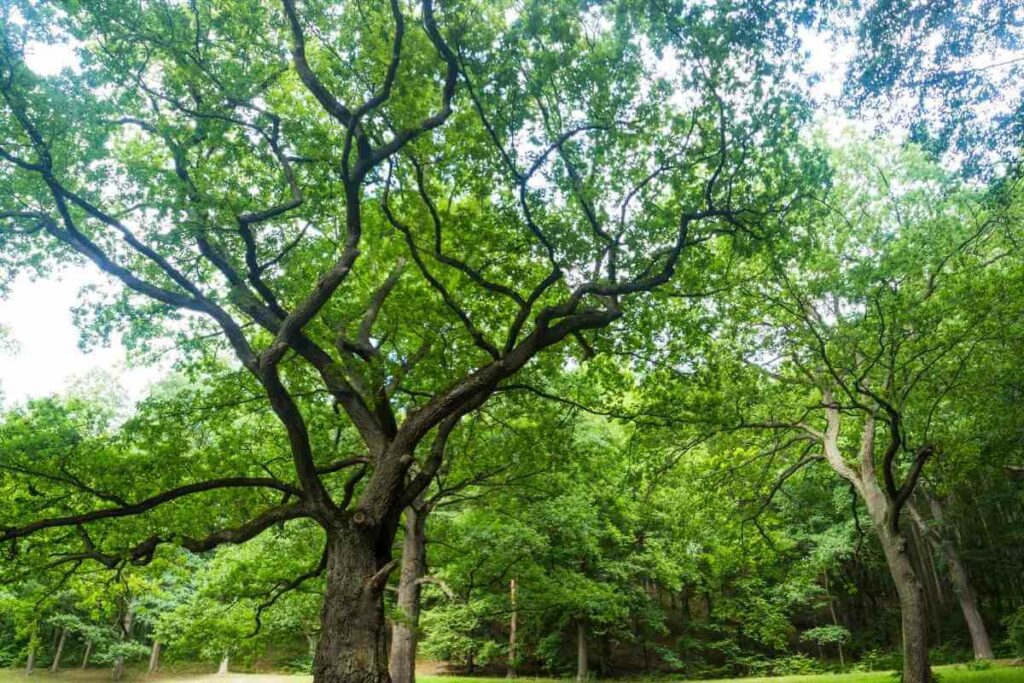
Within it contains one or two seeds which give rise to the oak tree. Normally, oaks only start producing viable seeds after decades of growth.
Animals pick up and distribute ripe acorns that fall from the tree. In the right conditions, the seed will germinate with a root penetrating the acorn exterior, followed by the emergence of a shoot.
Phototropism ensures that the root establishes itself in the soil to take in water and nutrients while the shoot seeks light and develops its first leaves.
2. The Appearance of Oak Shoots Takes 8 to 10 Weeks
Seedlings are oak shoots that have emerged above ground.
In forests, few young oaks get beyond this point because of disease, trampling or grazing by animals like deer.
3. An Oak Seedling Takes a Further 6 Months to Become a Sapling
The oak seedling becomes a sapling when it has exceeded three feet in height.
The sapling stage may vary between oak species but will last between 20 and 40 years, which is common in trees that have high longevity.
Unlike mature trees, oak saplings have:
- Smoother bark than mature oaks
- A flexible trunk
- An inability to produce flowers, fruit and fertile seeds
4. An Oak Tree Takes at Least Four Decades to Mature
You can recognise a mature oak tree by its production of flowers, catkins and acorns.
The onset of acorn production in an English oak is 40 years. At this stage it is a small oak tree.
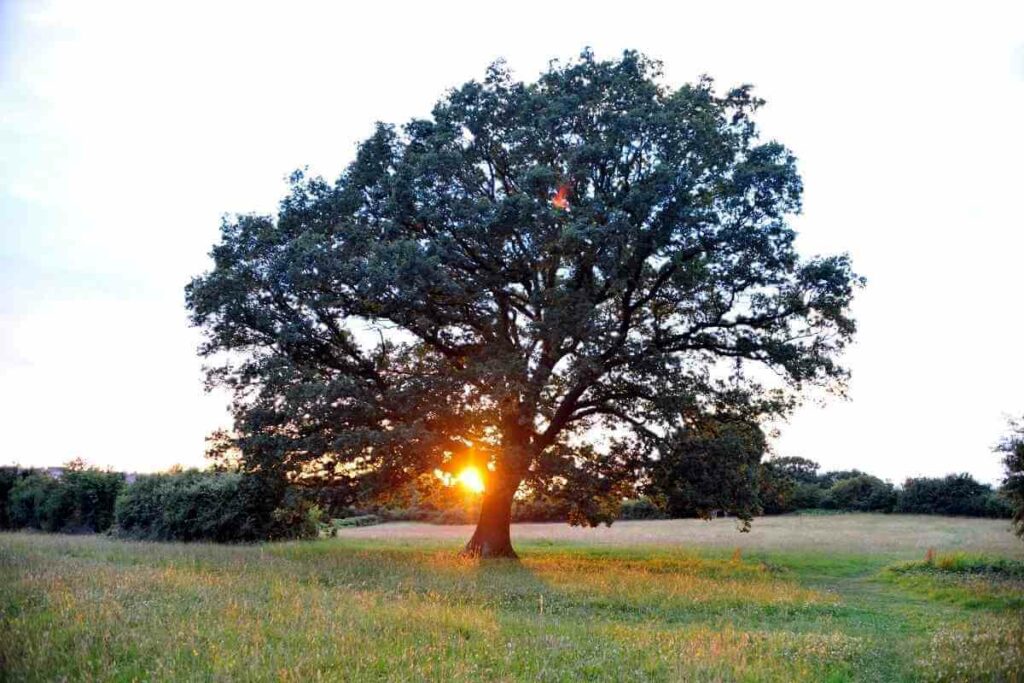
From this stage its growth and productivity uptick over the next four to eight decades, to peak acorn production at 80 to 120 years.
5. The next Stage of Growth Progresses an Oak to Becoming a Large Oak Tree
The productivity and growth rate of an oak tree will continue to increase to 300 years of age when it becomes a large oak tree.
During this period of its lifespan it can give rise to many young trees as it is fertile.
6. After 300 Years the Growth Rate of Oaks Drops Off
A mature oak can enter a period where it rests and slows its growth and productivity.
Few People Know: This can last as long as 300 years. It can re-enter productivity of an undetermined period following this inactive period.
7. At about 700 Years, an Oak Tree Is Considered a Great Oak
This is where a tree exceeds the maturity of other trees and becomes ancient.
These aged oaks often have a small canopy and wide, hollowed trunk.
Estimating the age of ancient oak trees may involve observation of its physical features, measurements and review of historical documents or other evidence of its longevity.
8. An Oak Tree’s Lifespan Is 600 to 1000 Years
A dead oak is a feature of ancient woodland and productive forest management.
If an area of woodland is managed, dead oaks may be felled and chipped with the shavings of the tree returned to the soil.
The tree trunks of dead oak trees provide habitats for a variety of insect species who lay their eggs in the dead wood.
The insects attract birds and other animals who feed on the insects or nest in hollows and crevices in the wood.
Other notable life stages for an oak include:
- An oak can also be called a notable oak after 150-200 years old.
- Oaks that are 150-300 years old are known as veteran oaks.
Here Is a Helpful Chart That Summarises Oak Tree Growth Rate
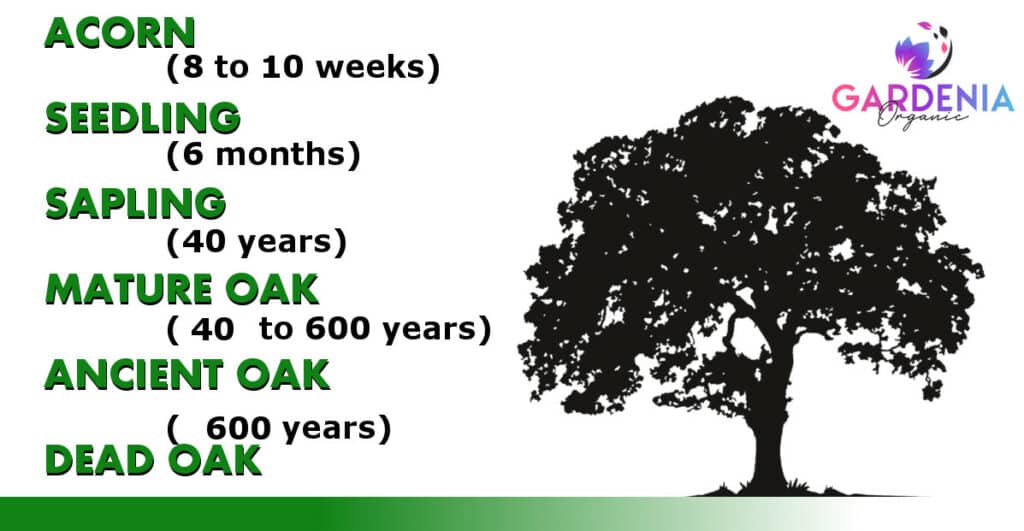
Rounding Up
Planting a humble oak tree creates a legacy that lasts many lifetimes and it’s amazing to think just how long-lived these everyday trees are.
If you are planning on planting an oak tree and enjoying watching it grow, now is the time to do it.
Within a human lifetime, you may just be able to see your tree produce its first crops of acorn and enter maturity.
